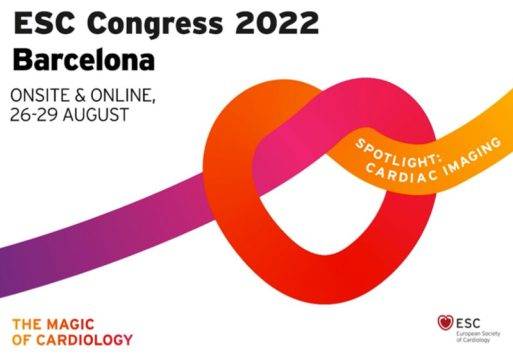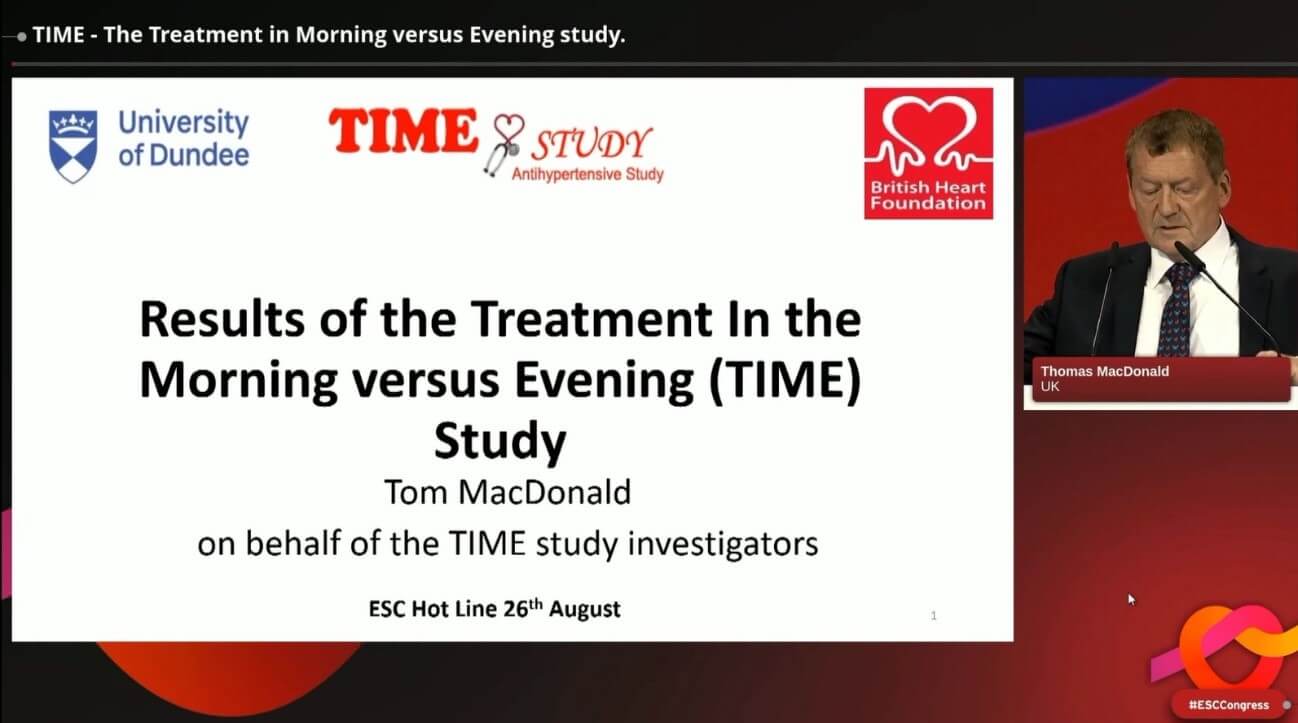The TIME study, presented by Dr. Thomas MacDonald, is a randomized study of over 21,000 patients with high blood pressure with a follow-up beyond 5 years.

As is widely known, high blood pressure is the leading global cause of early death, accounting for nearly 10 million deaths in 2015, of which 4.9 million were caused by ischemic heart disease and 3.5 million, by stroke. Nocturnal blood pressure is a better predictor of cardiovascular events than diurnal blood pressure. According to the results of the Hygia study, administering medication at night could be a protective factor for cardiovascular events.
Based on these data, researchers developed prospective, randomized study TIME. Its objective was to show whether administering antihypertensive medication during the afternoon could improve the rates of cardiovascular events compared with morning medication.
Patients taking at least one antihypertensive drug were randomized 1:1 to drug administration in the morning or in the evening. The primary endpoint (PEP) was a composite of hospitalization for nonfatal acute myocardial infarction, nonfatal stroke, or vascular death.
Leia também: TAVI em bicúspides: os resultados são os mesmos em homens e mulheres?
The study included 21,104 patients with a mean age of 65 years; 58% of them were men, and the mean follow-up was 5.2 years. The PEP was observed in 3.4% of those who took the medication in the morning vs. 3.7% of those who took it in the afternoon (hazard ratio: 0.95; 95% confidence interval: 0.83-1.10; p = 0.53). These results did not vary between the different subgroups analyzed.
Conclusion
This study, with a very large cohort of patients, showed no changes in the occurrence of acute myocardial infarction, stroke, or vascular death based on the administration of antihypertensive treatments at different times of the day.


Dr. Omar Tupayachi.
Membro do Conselho Editorial da SOLACI.org.
Fonte: MacDonald TM. TIME – the Treatment in Morning versus Evening study. Presentado en el Congreso Europeo de Cardiología ESC 2022. Agosto 26, 2022. Barcelona, España.
Subscreva-se a nossa newsletter semanal
Receba resumos com os últimos artigos científicos





